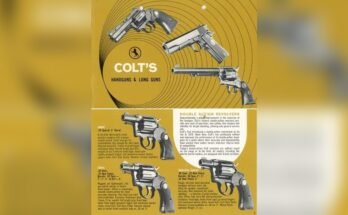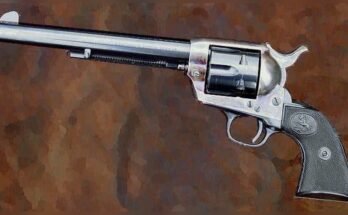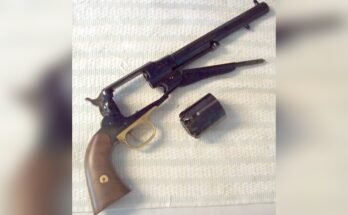Have you ever wondered how far you can accurately shoot with a snub-nose revolver? Whether you own one or are just curious, knowing the effective range is key to using it safely and confidently.
This small but powerful firearm is popular for self-defense, but its size also means it has limitations you should understand. You’ll discover what the effective range really means for your snub-nose revolver and how it impacts your shooting experience. Keep reading to get clear answers that will help you make smarter decisions with your firearm.
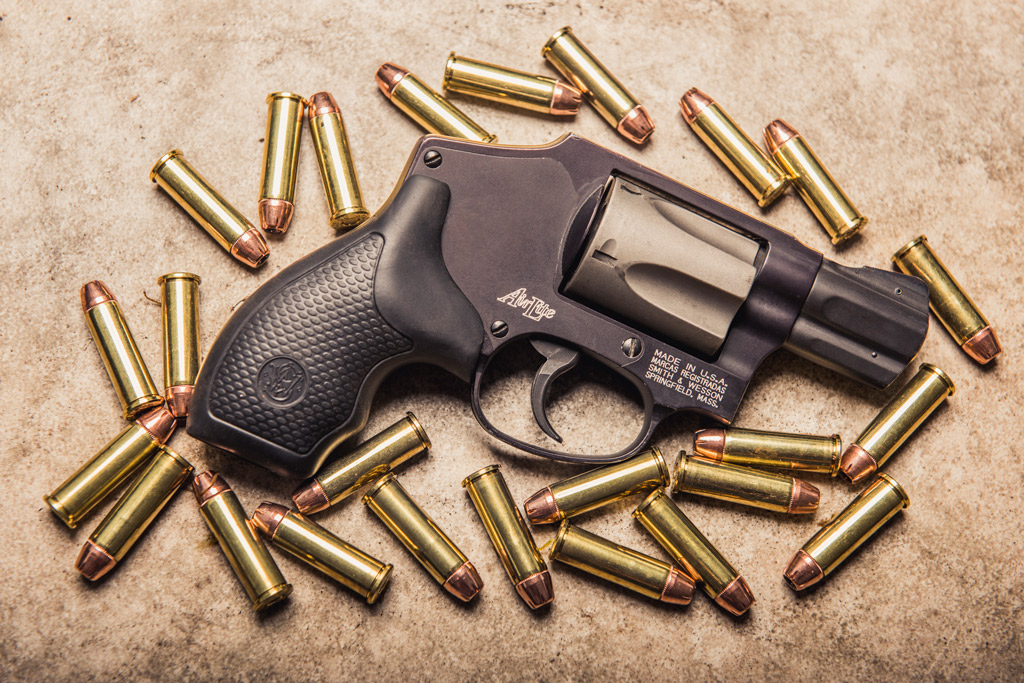
Snub-nose Revolver Basics
The snub-nose revolver is a compact firearm known for its short barrel and ease of use. It is popular for personal defense and concealed carry. Understanding its basics helps to grasp its effective range and performance. This section breaks down the design and common calibers of snub-nose revolvers.
Design And Features
The snub-nose revolver has a barrel length usually under 3 inches. This short barrel makes it easy to carry and quick to draw. The revolver’s frame is often small and lightweight. It uses a rotating cylinder to hold the bullets. The simplicity of the design makes it reliable and easy to maintain. The sights are often fixed and basic, designed for close-range aiming. The grip is sized for quick handling rather than long shooting sessions.
Common Calibers
Snub-nose revolvers come in several calibers. The most common are .38 Special and .357 Magnum. The .38 Special offers manageable recoil and good stopping power. The .357 Magnum has more power but stronger recoil. Other calibers include .22 LR and .44 Special, though less common. Caliber choice affects recoil, stopping power, and ammunition availability. Most snub-nose revolvers balance power with ease of control for short-range use.
Factors Influencing Effective Range
The effective range of a snub-nose revolver depends on several important factors. Each factor changes how far and how accurately the gun can shoot. Understanding these helps users get the best performance from their revolver.
These factors include the length of the barrel, the type of ammunition used, and the sight systems installed on the gun. Each plays a key role in the revolver’s range and accuracy.
Barrel Length Impact
The barrel length directly affects the bullet’s speed and stability. Short barrels mean less distance for the bullet to gain speed. This reduces the bullet’s velocity and energy, lowering the effective range. Longer barrels allow better bullet control and accuracy. Snub-nose revolvers usually have barrels around 2 inches long. This limits their range compared to longer-barreled guns.
Ammunition Type
Ammunition affects how far and how well the bullet travels. Heavier bullets may drop faster but hit harder. Lighter bullets fly faster and farther but may lose power quicker. Some bullets are designed for close range, with more expansion on impact. Others suit longer range with better flight stability. Choosing the right ammo balances power and range for snub-nose revolvers.
Sight Systems
Sight systems help aim the revolver more accurately. Many snub-nose revolvers have simple fixed sights. These work well at short distances but limit precision at longer ranges. Upgrading to adjustable or enhanced sights can improve aiming. Better sights help shooters place shots more accurately, extending the effective range. Clear, easy-to-use sights are vital for quick target acquisition.
Typical Effective Range Distances
Typical effective range distances of a snub-nose revolver vary based on its design and use. These compact guns excel at short distances. Their size limits accuracy over longer ranges. Understanding these distances helps with safe and effective shooting.
Close-range Accuracy
Snub-nose revolvers perform best at close range. This range is usually within 7 to 10 yards. At this distance, shooters can hit targets quickly and reliably. The short barrel allows fast drawing and aiming. Accuracy is good enough for self-defense situations. The gun’s light weight makes it easy to handle in tight spaces.
Mid-range Performance
Mid-range shooting spans from 10 to 15 yards. Accuracy drops as distance increases. The short barrel limits bullet velocity and stability. Shooters may find it harder to hit small targets. Mid-range shots require steady hands and careful aiming. For most users, snub-nose revolvers are less effective beyond 15 yards. They are best kept for close encounters.
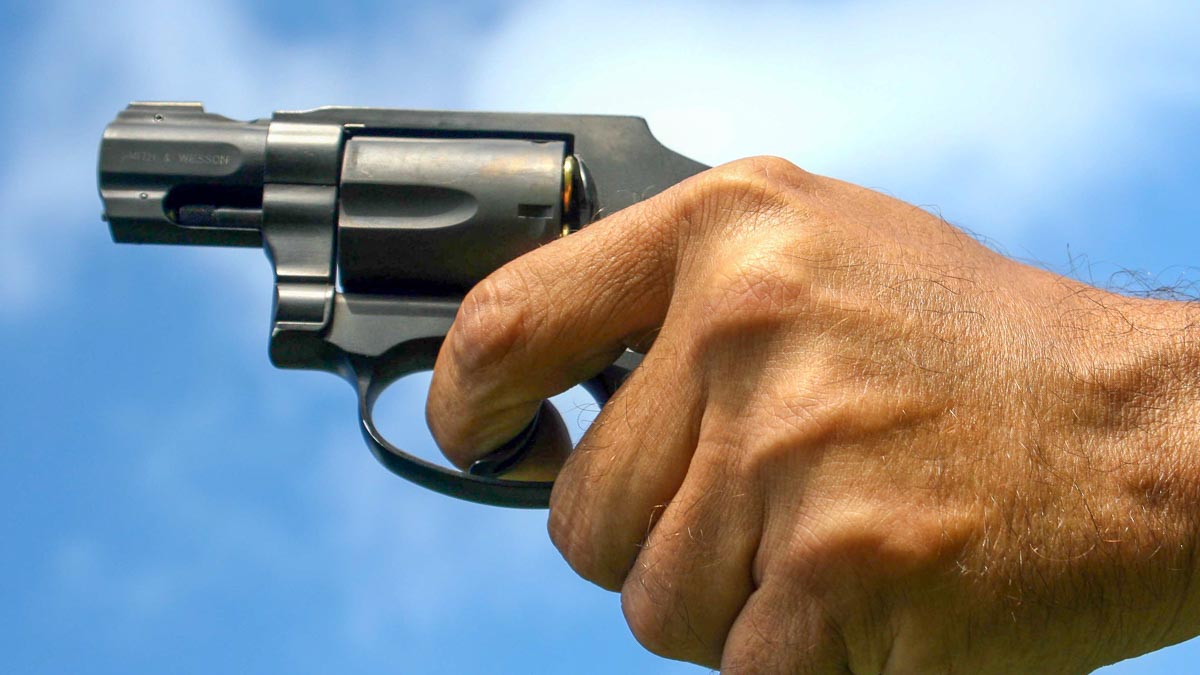
Practical Use Scenarios
The effective range of a snub-nose revolver suits specific real-life uses. This compact firearm shines in close quarters. Its design focuses on quick handling and ease of carry. Understanding practical scenarios helps to see why it excels at short distances.
Self-defense Situations
Snub-nose revolvers work well for self-defense. Their small size makes them easy to carry daily. People can hide them in pockets or bags without bulk. The short barrel means shots are best under 7 yards. This range fits most home or personal defense needs. Quick draws and fast shots are possible. The revolver’s reliability reduces the chance of jams. This reliability matters in high-stress moments. Stopping threats quickly is the main goal.
Law Enforcement Applications
Many officers use snub-nose revolvers as backup guns. They offer a compact option when primary weapons are unavailable. The revolver’s simple mechanism allows fast use under pressure. Close-range encounters in law enforcement often happen within 5 yards. The revolver’s effective range matches these encounters well. Its durability and ease of maintenance add to officer confidence. Officers rely on it for last-resort protection. The revolver’s size helps avoid interference during duty.
Expert Tips For Accuracy
Improving accuracy with a snub-nose revolver takes more than just aiming well. Small changes in how you hold and shoot can make a big difference. These expert tips help you shoot better and more confidently.
Grip And Stance
A firm grip keeps the revolver steady. Hold the gun with both hands if possible. Your dominant hand grips the handle tightly. The support hand wraps around the dominant hand. This control reduces recoil and improves aim.
Stand with your feet shoulder-width apart. Keep your body balanced and relaxed. Face the target squarely for better alignment. A stable stance helps you stay steady while firing.
Trigger Control
Squeeze the trigger slowly and smoothly. Avoid jerking or pulling the trigger fast. A gentle trigger press stops the gun from moving off target. Place your finger on the center of the trigger for best control.
Practice dry firing to build good trigger habits. This trains your muscles to press the trigger evenly. Better trigger control means better accuracy at any range.
Limitations And Challenges
Snub-nose revolvers have clear limits that affect their effective range. These challenges impact how well you can shoot accurately and quickly. Understanding these limits helps in using the revolver safely and effectively.
Short barrels mean less bullet speed and less accuracy over distance. Small size makes controlling the gun harder, especially with strong recoil. These factors limit the best shooting range for snub-nose revolvers.
Recoil Management
Snub-nose revolvers have stronger recoil than longer guns. The short barrel and light weight increase the kick felt by the shooter. This can make it hard to keep the gun steady for follow-up shots.
New shooters may struggle with recoil control, leading to less accuracy. Proper grip and stance help reduce recoil effects. Practicing recoil management improves shot placement at close ranges.
Visibility And Target Acquisition
Small sights on snub-nose revolvers limit how well you see the target. The short barrel leaves little space for larger or adjustable sights. This reduces aiming precision, especially at farther distances.
Quickly finding the target can be tough in low light or stressful situations. The compact design trades sight size for concealability. Clear visibility and fast target acquisition are key to effective use at short range.
Comparing Snub-nose To Other Handguns
Comparing snub-nose revolvers to other handguns helps understand their strengths and limits. Each type of gun serves different needs and situations. Knowing these differences guides better choices for self-defense or shooting practice.
Versus Semi-automatic Pistols
Snub-nose revolvers have shorter barrels than semi-automatic pistols. This makes them easier to carry but less accurate at long distances. Semi-automatic pistols usually hold more bullets. They reload faster and offer better range. Snub-nose revolvers work well for close encounters. Semi-automatics excel in situations needing quick follow-up shots.
Versus Longer-barreled Revolvers
Longer-barreled revolvers provide better accuracy and higher bullet speed. They are heavier and harder to conceal. Snub-nose revolvers sacrifice some range for compactness. They are ideal for quick draws and tight spaces. Longer barrels help shooters aim steadily at farther targets. Snub-nose guns focus on ease of carry and quick use.

Frequently Asked Questions
What Is The Effective Shooting Distance Of A Snub-nose Revolver?
The effective range of a snub-nose revolver is typically 7 to 15 yards. Its short barrel limits accuracy beyond this distance. It’s best suited for close-range self-defense situations where quick handling is essential.
How Does Barrel Length Affect Snub-nose Revolver Range?
Shorter barrels reduce bullet velocity and sight radius, lowering accuracy at long distances. Snub-nose revolvers usually have 2 to 3-inch barrels, limiting their effective range to close quarters.
Can Snub-nose Revolvers Be Accurate Beyond 15 Yards?
While possible, accuracy decreases significantly past 15 yards due to barrel length and sight limitations. Skilled shooters may extend this range slightly, but snub-nose revolvers are optimized for short-range use.
Why Are Snub-nose Revolvers Popular For Self-defense?
Their compact size allows easy concealment and quick draw. Despite limited range, they are reliable and effective within typical self-defense distances, usually under 15 yards.
Conclusion
Snub-nose revolvers work best at close distances. Their short barrels limit accuracy beyond 7 to 10 yards. This makes them ideal for self-defense in tight spaces. Practice helps improve shooting skills within this range. Understanding their limits keeps you safe and effective.
Choose your firearm based on how and where you plan to use it. Remember, knowing your weapon’s range is key to confidence and safety.

